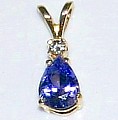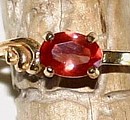
Steam Casting Jewelry Arts

 |
Steam Casting Jewelry Arts |
 |
Casting Your Own Lost Wax Jewelry Using The Steam Cast Method In my section about lost wax casting, I discussed the history of that craft and the basics of how it works. If you would like to see more of my page on lost wax casting, please check out this webpage at: Lost Wax Jewelry Casting To explain the lost wax process simply, first a wax model of the piece to be cast is made. A channel way which allows the gold to flow down into the jewelry piece is attached - it is also made of wax. The wax model is then surrounded by a special plaster of Paris type material, with the sprue leading to the surface to allow gold to flow down it. After drying, the plaster containing the wax model is heated, and all of the wax evaporates, leaving a void where the model was, and a void where the sprue was located. Gold which has been melted is then poured through the opening of the sprue into the space where the model was. The gold fills up the space creating a gold casting of the exact shape and size as the wax model originally was. In modern lost wax casting, two processes are used to help force the liquid gold down into the void left when the wax model melted. One process uses a strong vacuum to suck the air in the void out pulling the molten metal down. Another process uses a spinning device which creates a large centrifugal force. The whipping force of the centrifuge drives the molten metal into the void space. Now if the ancient and primitive peoples of Egypt and South America could do lost wax casting, and produce beautiful works of art, then so can you – with the proper tools and training. Most of the necessary tools and equipment can be purchased right over the internet, and books are available to teach you what you need to know. Here are the basics of how you can do your own lost wax casting using the pressure of steam. 1) Gold, Silver or other precious metals in a clean and castable form (often used jewelry needs cleaning and melting with borax to remove dirt, corrosion and impurities). 2) A torch powerful enough to melt a few ounces of gold or silver. 3) Lost wax casting investment material (the plaster like stuff). 4) A rubber mixing bowl – it is important to mix your investment material with as few bubbles as possible. The bubbles tend to adhere to the wax model and create bubble bumps on the finished product. Shake or vacuum the material to remove bubbles. 5) Various wax models and extra wax to make access sprues. The jewelry wax material is a special type, not just normal paraffin as is used in candles. It has a known density so that the correct amount of metal can be melted for the casting process. |
||
|
||
|
6) A burn out oven capable of about 800 F, which is used to vaporize the waxes. 7) A “crucible” which in this case is a metal tube, to contain the investment and wax for the whole casting process. 8) A steam generator – usually a metal can which has wet material attached to the inside. After the wax is made, the sprue attached, the investment poured, and the entire product baked to drive out the wax, molten metal is poured in and the steam unit pressed on top. Steam thus created pushes the metal down into the mold. After a time is waited for the metal to cool and solidify, the casting is put under water and the investment material dissolves away. As a note, casting molten metal can be very dangerous. Molten metal splattered on clothing or skin quickly causes severe burns. Protection of the eyes and other parts of the body is necessary. Wax vapors can be flammable so precautions need to be taken there as well so that the room is fully ventilated. It is strongly urged that anyone who would like to attempt this process purchase books which provide more detail as to how it is done, and read them carefully. These books will also further explain the necessary safety precautions in detail. The above explanation is not intended to provide a full explanation of the process or the hazards involved, but merely to give the reader a better idea of what it would take if one wanted to attempt lost wax casting on a budget. |
|
|
|
|
||
Want to know a little bit more about this crazy prospector guy? Well, here's a little bit more about me, and how I got into prospecting: Chris' Prospecting Story